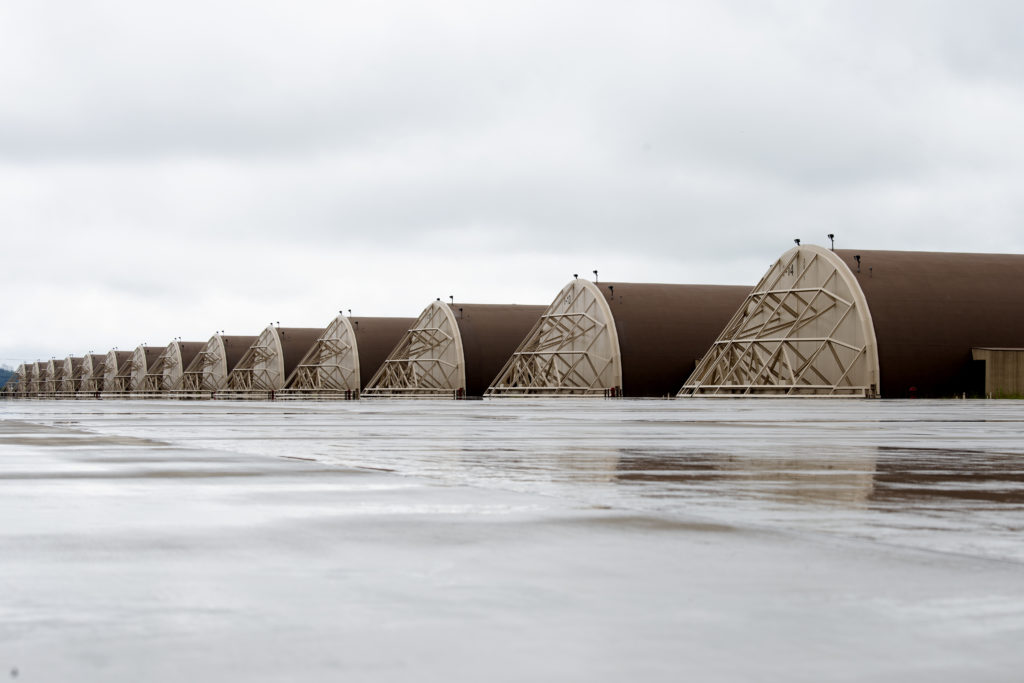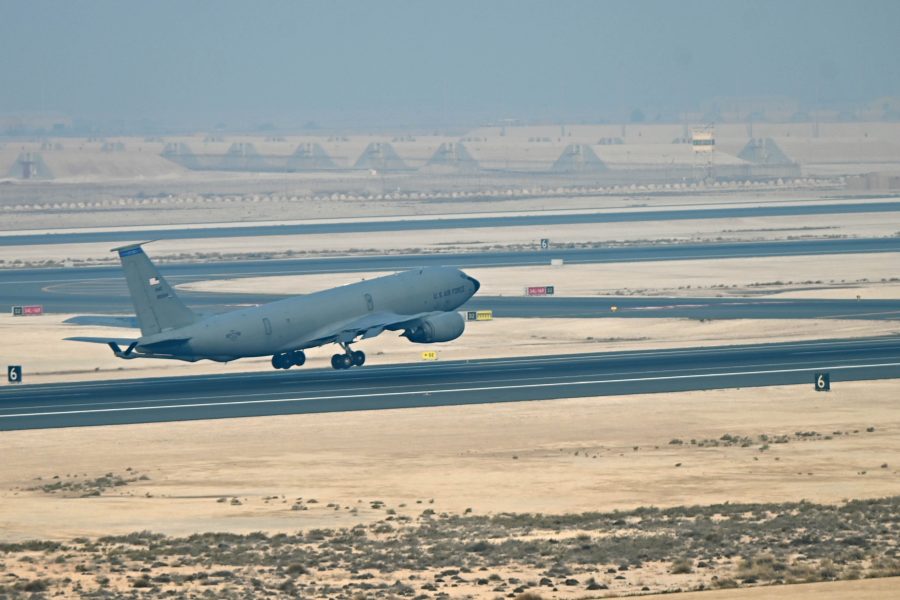As the Air Force readied for its June 21-22 strikes on Iran’s nuclear facilities, the service was also putting its Agile Combat Employment strategy into action. Satellite imagery showed combat aircraft emptying Al Udeid Air Base in Qatar in preparation for a possible Iranian retaliatory attack.
When that attack came June 23, a small number of U.S. and Qatari air base defenders remained on base. They repelled the attack, firing “round after round” from Patriot missile launchers, intercepting 13 short- and medium-range ballistic missiles, Chairman of the Joint Chiefs of Staff Gen. Dan Caine said during a June 26 Pentagon briefing. There were no casualties or major damages.
“Most folks had moved off the base to extend the security perimeter out away of what we assessed might be a target zone,” Caine said.
Iran gave advance warning of the attack, President Donald Trump said, and the massive installation is an obvious target because of its strategic importance and close proximity to Iran. But some defense experts maintain that dispersing forces from Al Udeid was a successful use of Agile Combat Employment that may be more necessary in the future as threats from missiles, offensive drones, and other aerial weapons continue to threaten large, fixed air bases.
“The name of the game is complicating the targeting solution for your adversary,” Ravi Chaudhary, former Air Force Assistant Secretary for Installations, Environment and Energy told Air & Space Forces Magazine. “The priority for any response now … is getting the jets airborne and getting them out of dodge or into the fight fast–that’s what Agile Combat Employment is all about.”
Tom Karako, director of the Center of Strategic and International Studies’ Missile Defense Project, said that bases in the Middle East were under increased threat even before the U.S. attacked Iranian nuclear facilities. The advancement of long-range attack drones like those used by Iran in April 2024 to attack Israel and those Ukraine launched June 1 to attack Russian bomber bases in Operation Spiderweb have provided adversaries with more options.
“What’s really changed is the nature of the threat environment … and the supply of lots and lots of various forms of aerial attack,” Karako said. The practice of dispersing aircraft is not new, but it “may need to be more frequent than it has been over the last 30 years … because of the nature of the threat,” he added.
Still, Timothy Walton, a senior fellow at the Hudson Institute, said the Air Force should not rely too heavily on dispersing its forces and instead invest in hardened shelters to protect its stealth fighter and bomber aircraft from aerial attacks. Walton co-authored a January report that preceded a similar RAND Corp. report in early June, both of which critiqued the Air Force for deferring hundreds of millions of dollars for passive defenses such as hardened shelters to fund high-priority acquisition programs.
“Agile Combat employment is becoming ingrained into the Air Force’s thinking of how to operate in future contested environments, and the ability to disperse your aircraft is a highly valuable approach that can reduce the risk of being targeted, but I will say that the Air Force’s current dispersion-heavy, hardening-light approach is likely inadequate,” Walton said.
U.S. aircraft will need to disperse to other airfields with hardened shelters because “in a large-scale war, many of those airfields would also be attacked,” he said. Additionally, near-peer adversaries such as China have space-based targeting systems that can “detect where these aircraft disperse to and attack them in detail.”
An Air Force spokesman told Air & Space Forces Magazine that Airmen will participate in a service-wide exercise this summer that will force them to employ ACE tactics “to increase survivability and ensure air superiority for the joint force.”
Chaudhary acknowledged that there has been a lot of discussion on why the Air Force isn’t building more hardened shelters. He pointed out that TAB-VEE-style hardened shelters “are expensive to build and upkeep, upwards of $300 million for one facility” that’s designed to protect a single aircraft.
Most TAB-VEE shelters were largely built during the Cold War between the 1960s and the early 1980s. Walton said there are more modern alternatives available that cost far less. He pointed to a 2017 project at Kunsan Air Base in South Korea that built 10 single-aircraft hardened shelters at a cost of approximately $30 million.

But Chaudhary said survivability isn’t always about reinforced concrete.
“In the information age, protecting installations goes way beyond thicker concrete,” he said. “There are a full range of things that need to be done to ensure installations are ready and survivable.”
Air bases need other types of passive defenses such as redundant power and fuel sources as well as cyber hardening, Chaudhary said, agreeing that the Air Force needs to invest consistently in passive defense measures.
“You don’t even need a missile; a carefully-placed cyber attack can shut down all of our capabilities and render us unable to even get our jets out of town,” he said.
Recent attacks by Israel and the U.S. have left Iran and proxy forces such as Hamas in the Gaza Strip and Hezbollah in Lebanon “significantly degraded,” but they still remain a threat in the future, Central Command Deputy Commander Vice Adm. Brad Cooper recently told Congress.
Karako said the threat to U.S. installations goes beyond the Gulf region.
“It’s not just the Middle East; it’s the North American region we have to worry about too,” he said. “I would worry about an Iranian cell in the United States that has access to [drones] and decides they want to go after a base with bombers parked outside.”
Chaudhary said he is confident the U.S. military can “continue to execute Agile Combat Employment tactics and attain all of our strategic objectives” but it must remain adaptable as the threats to air bases evolve.
“The challenges are real, and the threat is real,” he said. “Our installations are no longer a sanctuary.”


